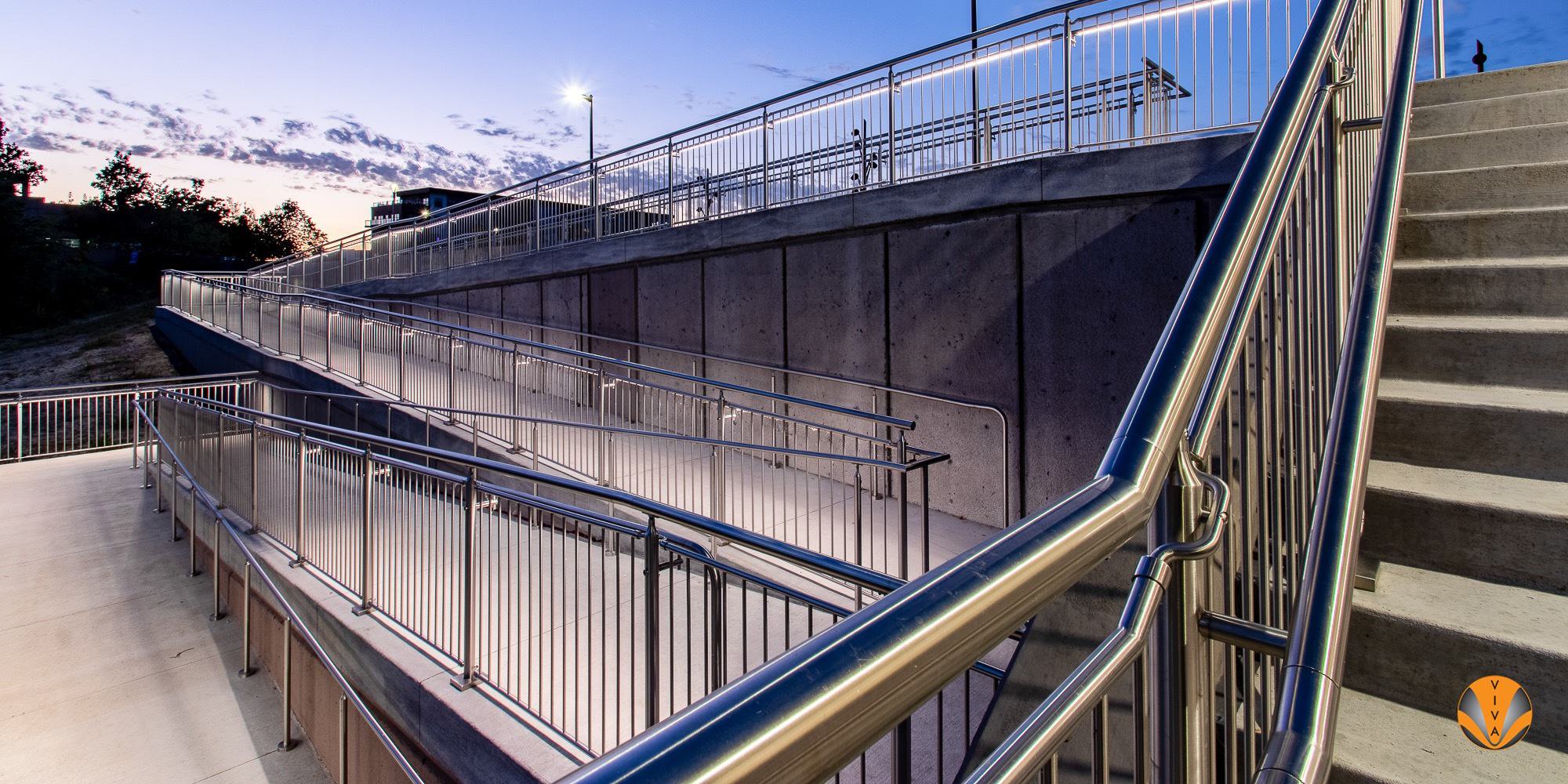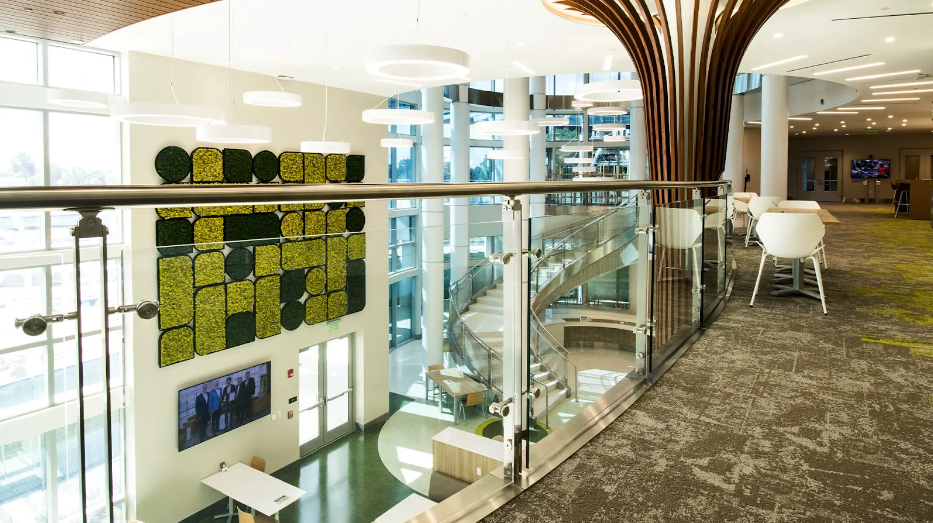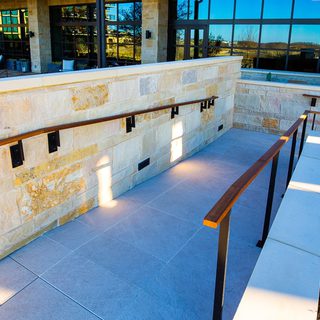Well-designed public spaces seamlessly integrate the aesthetic and functional elements of the design. In a well-designed space, many users don’t even realize how much the actual design of the space has helped them move through it. Public spaces serve a wide range of people and varying levels of abilities, so they must be equitable and accessible to as many people as possible.
According to the American Psychological Association, using the principles of universal design, the idea that,is “the process of creating products and built environments to be usable by all people, to the greatest extent possible, without the need for adaptation,” allows public spaces to accommodate those with disabilities to benefit everyone.
Choosing to use these principles for railing design in public spaces can open areas up for use to the greatest extent possible. Benefits of designing public spaces with accessible railings include more walkability, greater stability, increased safety, and a feeling of inclusion.
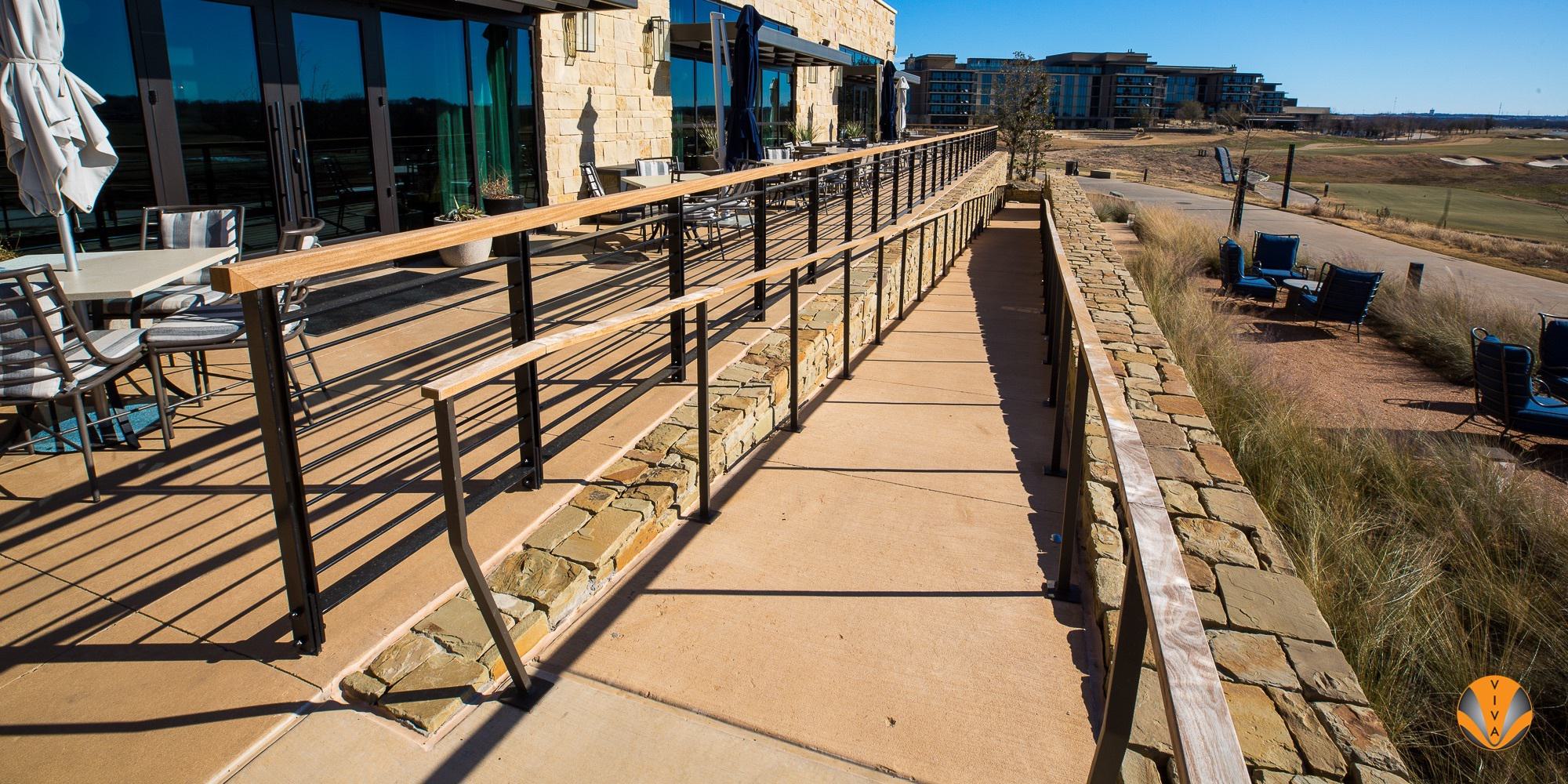
How Railing Design Can Serve Everyone
In March 2023, J.E. Rod, Mark King, and Oscar Oviedo-Trespalacios published the results of their study “The impact of perceived injury risk and psychosocial factors on walking equity” in which they explored the factors that discouraged older adults from walking. While perceived risk varies from person to person and is difficult to define, the researchers focused on Perceived Risk of Pedestrian Injury (PRPI) which included potential pedestrian traumas like pedestrian-vehicle collisions (PVC) and pedestrian falls.
One way that they found to decrease the perceived and objective risk of pedestrian falls were to provide pedestrian handrails as well as to smooth the walking surface and increase sidewalk width, among other things. In this example, the psychological effect of railing design is one that allows not only older adults to feel safe while walking, but it can also affect everyone who uses the space.
Including stable handrails in public spaces can also act as a universal design inclusion method. Universal design seeks to benefit everyone regardless of ability. Including handrails in public spaces can help those with mobility issues more easily use the space, and they also help to prevent falls for the entire population of users, regardless of ability.
The Importance of Inclusive Design
Everyone wants to belong and countless studies have concluded that a sense of belonging is crucial to a person’s development. In 1943, Abraham Maslow published his hierarchy of needs and placed safety needs — personal security, health and resources — just above the basic physiological needs of food, shelter, and clothing. Just above safety needs is the need to feel a sense of love and belonging. Railing design in public spaces can serve to fulfill both the need to feel safe and the need to belong.
For the 13% of civilian noninstitutionalized people in the U.S. who have a disability, that sense of belonging can come from unexpected spaces, like railing design. The inability to access a space due to physical or mental limitations can be demoralizing and call for additional stress and time to figure out a way to gain access. Providing accessible railing systems in public spaces can literally remove the barrier to entry and give everyone the access they deserve and serve to further inclusivity.
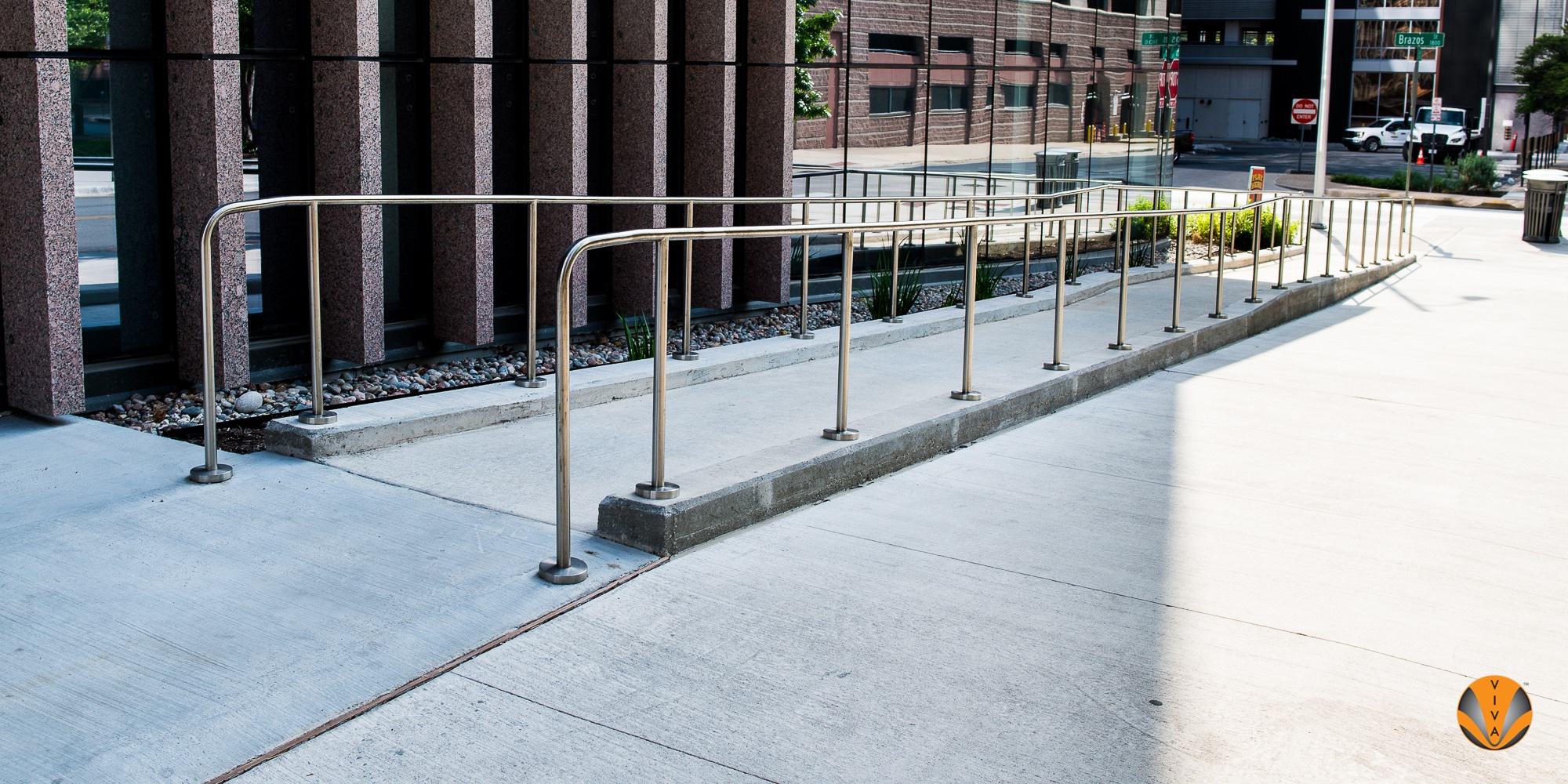
How Can VIVA Railings Help?
VIVA Railings offers code compliant handrails that adhere to International Building Code (IBC) standards as well as the Americans with Disabilities Act (ADA) standards. In both cases, the building code standards are focused on providing the safest and most accessible environment possible. Guidelines for the handrail’s profile, gripping surface, and returns, as well as height and laid requirements ensure that they’re accessible to as many people as possible.
Our company includes various departments that can help you take the initial project conception and turn it into reality. Our wide range of code compliant stair railings, guards, and handrails can be customized with powder coating, a choice of handrail materials, and mounting options. Consistently looking for new ways to innovate, VIVA regularly develops new product lines in response to the built environment’s changing needs. We do our utmost to work with clients to develop the ideal railing system for their application and use a collaborative approach to foster lasting relationships.
VIVA’s story is one of persistence and adaptability. After beginning the company in 1972 to manufacture decorative cabinet handles, knobs, security door chains, and door stoppers, we underwent an evolution in 2005 that led to our next iteration — VIVA Railings. Our passion for innovation and growth can be seen in our inclusion on the Inc. 500/5000 list of Fasted Growing American Companies for eight years.
Our office includes an entire team that consists of product development, sales, estimating, design, engineering, project management, manufacturing, warehousing, logistics, field management, and accounting. The ability for everyone to work under one roof creates a sense of cohesion and allows us to better serve our clients with faster lead times and a design experience center that lets them directly see and feel our products.
